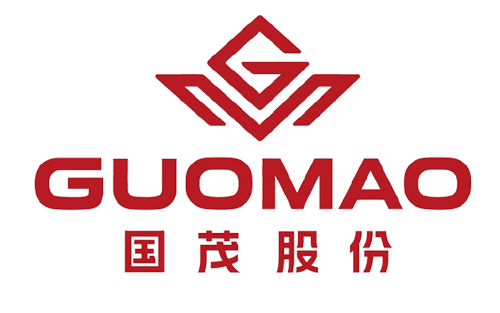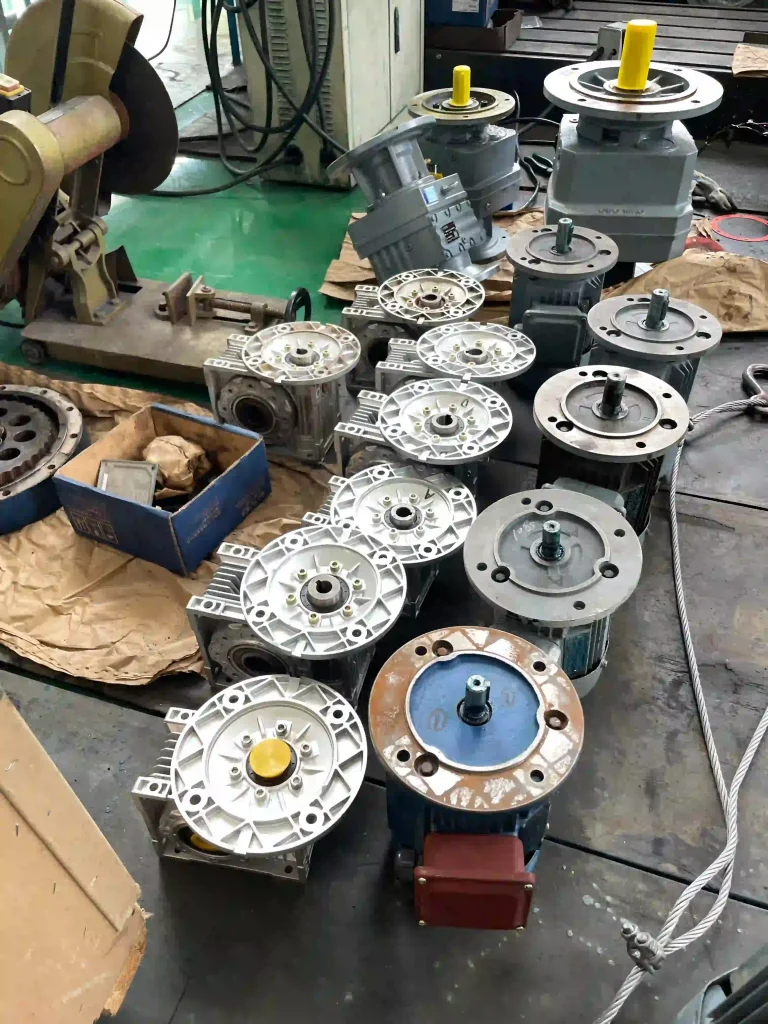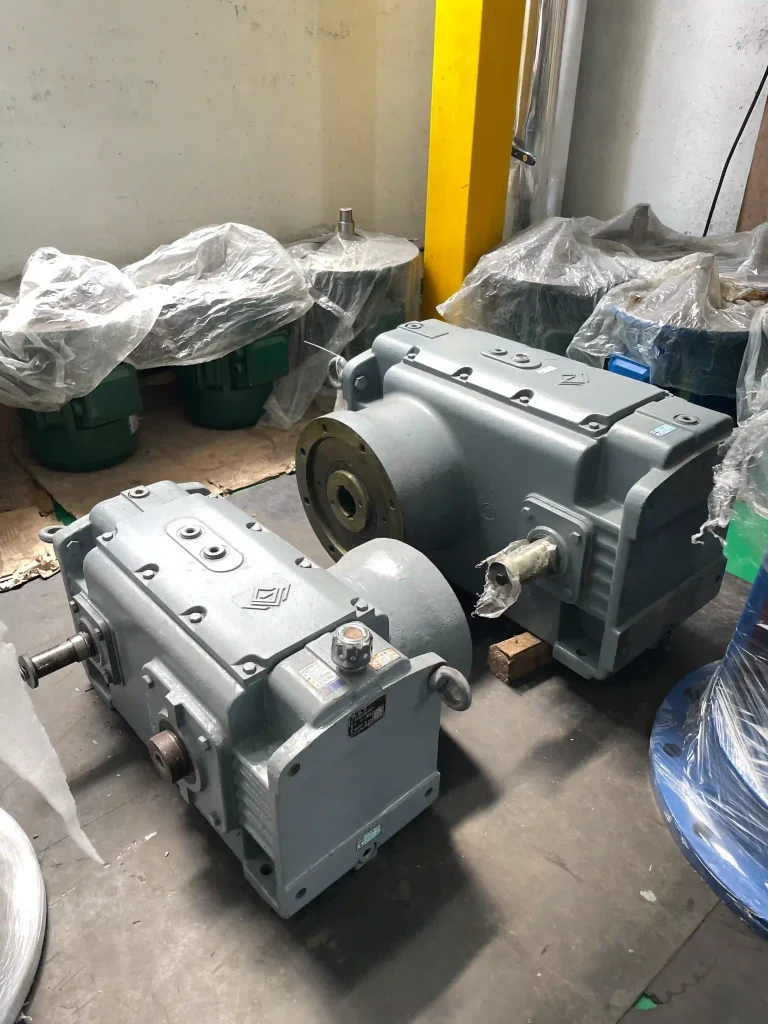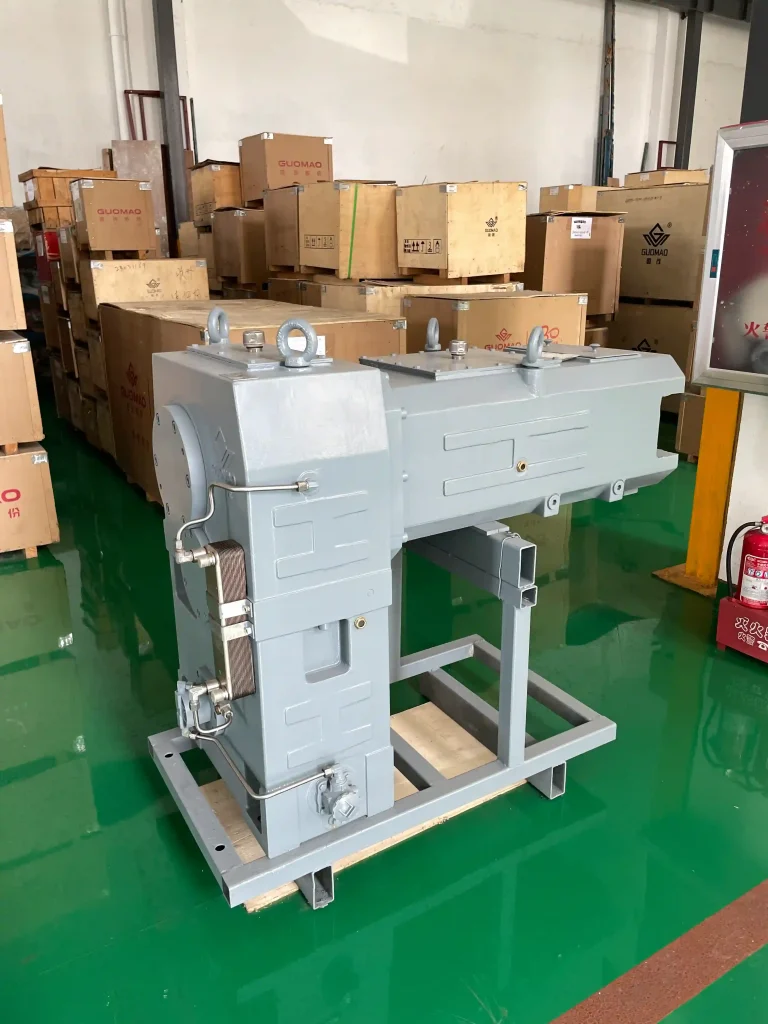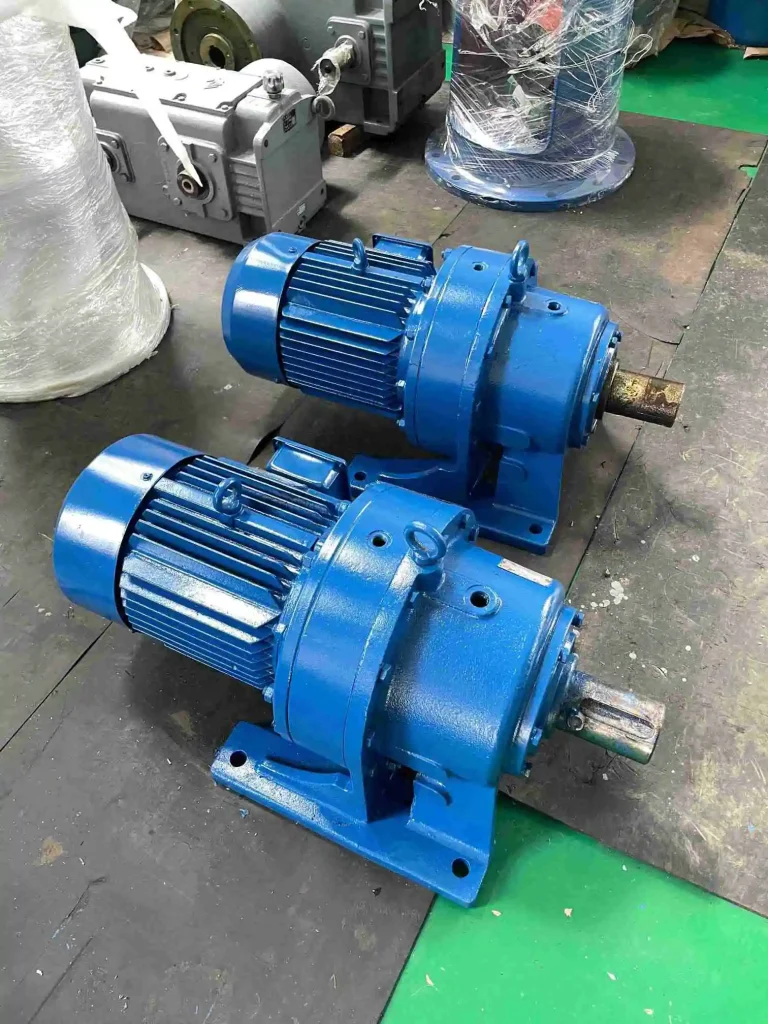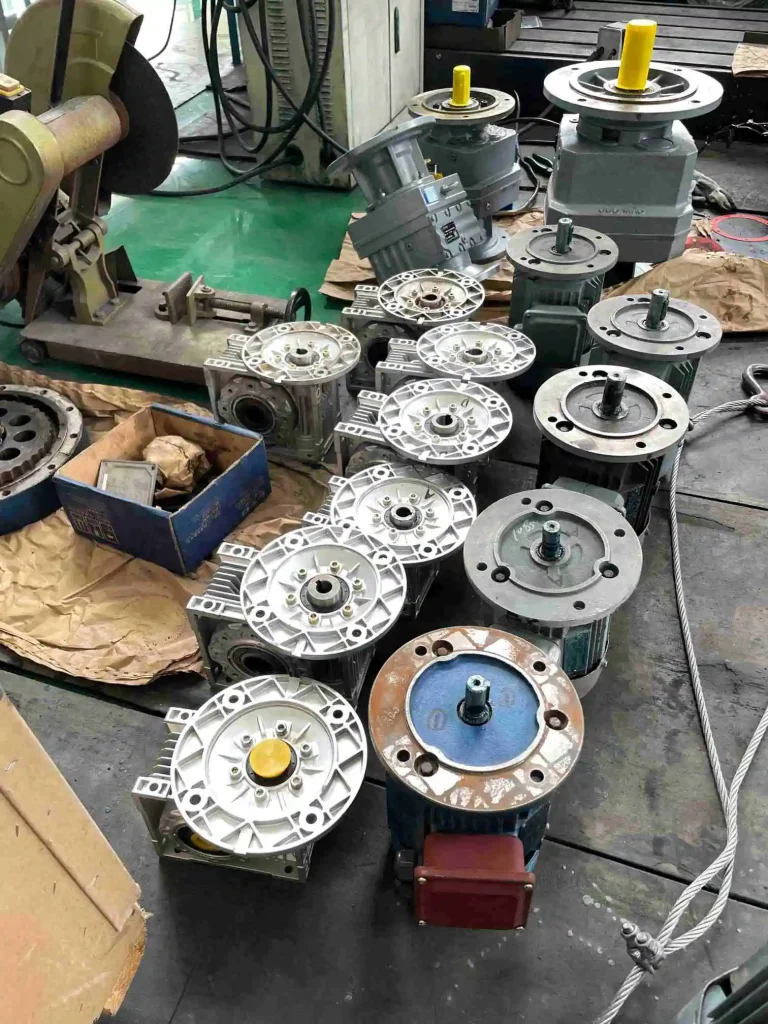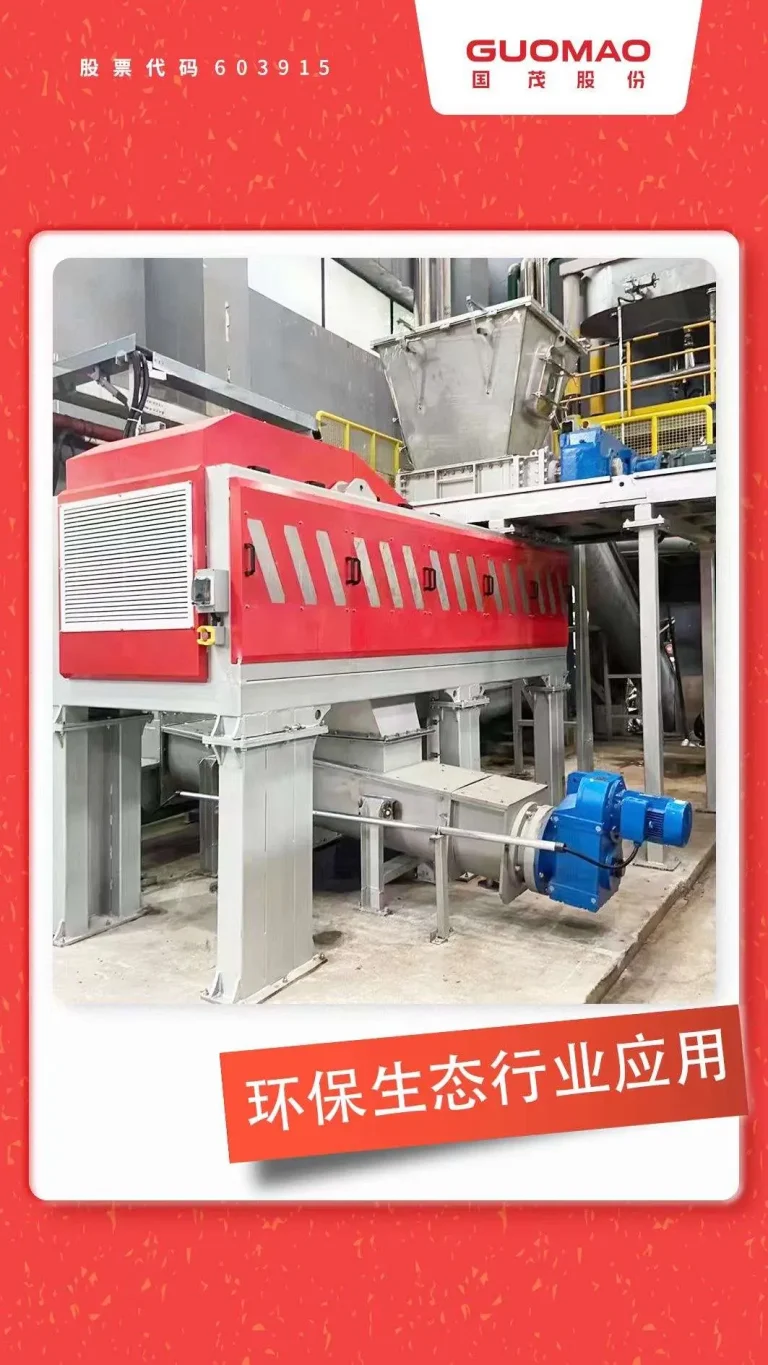Los engranajes son un gran negocio en las máquinas. Transmiten energía de manera eficiente y mantienen un funcionamiento sin problemas. Los engranajes helicoidales son una opción preferida debido a su capacidad para manejar cargas pesadas de manera eficiente. Dos tipos realmente aparecen: engranajes helicoidales simples y engranajes helicoidales dobles. Cada tipo tiene sus ventajas distintas. Ordenar lo que los hace diferentes te ayuda a coger el mejor para tu equipo.
En Guomao, nosotros’ re super genial en la fabricación de sistemas de engranajes elegantes como Serie GS Motor con engranaje de gusano helicoidal y Motor helicoidal de eje paralelo de la serie GFNuestros productos hacen que las máquinas brillen en lugares como fábricas, coches y centrales eléctricas. Este artículo explora las grandes diferencias entre engranajes helicoidales simples y dobles. Se mira cómo’ reconstruidos y por qué hacen que las máquinas funcionen mejor.
¿Qué son los engranajes helicoidales?
Antes de discutir las diferencias, vamos’ s define primero engranajes helicoidales.
Los engranajes helicoidales tienen dientes cortados en una inclinación al engranaje’ línea central. Esta inclinación les permite conectarse realmente suave y silencioso. Los dientes tocan uno a la vez, no todos juntos como engranajes de corte recto. Esto mantiene el ruido y el ruido bajo. Hay dos tipos principales: engranajes helicoidales simples y engranajes helicoidales dobles. Cada uno es adecuado para diferentes aplicaciones de máquina.
Engranajes helicoidales simples: diseño y aplicaciones
Los engranajes helicoidales individuales tienen un único conjunto de dientes inclinados alrededor del engranaje. Todos estos dientes apuntan de la misma manera. Esto hace un empuje a lo largo del engranaje’ centro, llamado empuje axial, cuando gira. Este empuje axial se puede gestionar usando rodamientos de empuje.
Características de construcción y diseño
Los engranajes helicoidales individuales tienen un diseño sencillo pero duradero. Los dientes inclinados les permiten conectarse bien con otros engranajes. Sin embargo, hay una limitación. Generan empuje axial a medida que giran. Esto puede conducir a un desgaste más rápido del rodamiento. Es posible que necesite piezas adicionales para manejar este empuje.
Ventajas de los engranajes helicoidales simples
- Acción suaveLos dientes inclinados hacen que los engranajes se enganchen suavemente. Esto reduce el ruido y el ruido.
- Servicio pesadoEstos engranajes son ideales para aplicaciones que requieren el manejo de cargas pesadas.
- Tamaño pequeñoSon relativamente sencillos de fabricar y pueden encajar en espacios compactos.
Limitaciones de engranajes helicoidales únicos
- Empuje axialEl empuje a lo largo del centro tensa los rodamientos. Necesitas piezas adicionales para manejarlo.
- Menos ahorro energéticoEllos’ Es bastante bueno, pero puede perder más potencia que los engranajes helicoidales dobles en tareas de gran par.
Los engranajes helicoidales únicos aparecen en máquinas de fábrica, transmisiones de automóviles y centrales eléctricas. Pasan bien la potencia, especialmente cuando el empuje axial es’ t un gran problema.
Engranajes helicoidales dobles: diseño y ventajas
Los engranajes helicoidales dobles tienen dos conjuntos de dientes inclinados en direcciones opuestas. Hacen una forma de V. Esta configuración distribuye la carga uniformemente a través de ambos conjuntos de dientes. Los ángulos de dientes opuestos neutralizan el empuje axial, proporcionando una ventaja significativa sobre los engranajes helicoidales individuales.
Características de construcción y diseño
Los engranajes helicoidales dobles son similares a los engranajes helicoidales individuales pero tienen un diseño distinto. Tienen dos conjuntos de dientes inclinados uno frente al otro. Este diseño elimina el empuje axial. Esto los hace súper ahorro de energía y reduce la necesidad de rodamientos de empuje. El diseño en forma de V distribuye aún más la carga, extendiendo la vida útil de los engranajes.
Ventajas de los engranajes helicoidales dobles
- Sin empuje axialLa inclinación del diente opuesto cancela el empuje. Esto reduce el desgaste de los rodamientos y hace que el sistema dure más tiempo.
- Mejor ahorro energéticoFuncionan increíblemente en trabajos de gran par porque la carga se distribuye uniformemente.
- Menos ruido y agitaciónLa forma en V hace que los engranajes se enganchen suavemente, cortando el ruido y los movimientos.
- Mayor manejo de cargaSon capaces de manejar cargas más pesadas en comparación con engranajes helicoidales individuales, lo que los hace ideales para maquinaria exigente.
Limitaciones de los engranajes helicoidales dobles
- Difícil de hacer: El diseño es más complicado, por lo que’ es más difícil y cuesta más construir.
- Más PreciosoPorque ’ Los engranajes helicoidales dobles son más caros que los engranajes helicoidales simples.
Los engranajes helicoidales dobles de Guomao se utilizan en máquinas pesadas, motores de barcos y engranajes precisos donde no hay empuje axial y la manipulación de cargas grandes son súper clave.
Análisis comparativo: engranajes helicoidales simples vs. dobles
Empuje axial
- Engranajes helicoidales únicos: Hacen empuje axial. Necesitas rodamientos de empuje para hacerle frente.
- doble engranajes helicoidalesCancelan el empuje axial con inclinaciones de dientes opuestas. Esto los hace más ahorradores de energía y más agradables para los rodamientos.
Ruido y vibración
- Engranajes helicoidales únicosEllos’ re más silencioso que los engranajes de corte recto, pero todavía hacen un poco de ruido y ruido debido al empuje axial.
- doble engranajes helicoidalesCorren más suaves y silenciosos gracias a los dientes en forma de V.
Capacidad de carga y eficiencia
- Engranajes helicoidales únicosManejan cargas grandes pero pueden perder más energía en trabajos de alto par.
- doble engranajes helicoidalesDistribuyen las cargas mejor, manejan más par y ahorran más energía, especialmente para tareas pesadas.
Complejidad y costo de la fabricación
- Engranajes helicoidales únicosSon más sencillos de fabricar y generalmente menos costosos.
- doble engranajes helicoidalesEllos’ son más difíciles de diseñar y construir, por lo que cuestan más.
Consideraciones espaciales y de diseño
- Engranajes helicoidales únicosEllos’ re más pequeño y más fácil de ajustar en lugares apretados.
- doble engranajes helicoidalesNecesitan más espacio debido a la forma en V, pero dan un mejor rendimiento para cargas pesadas.
Seleccionar el engranaje adecuado para su aplicación
Al elegir entre engranajes helicoidales simples y dobles, piense en algunas cosas:
- Necesidades de par: Los engranajes helicoidales dobles son increíbles para trabajos de gran par. Los engranajes helicoidales individuales funcionan para tareas de par más pequeños.Guomao"productos s son ideales para aplicaciones de alto par, asegurando una transmisión de potencia suave mientras manejan cargas pesadas de manera eficiente.
- Límites de espacioLos engranajes helicoidales simples son más pequeños, por lo que encajan mejor en espacios estrechos. Guomao’ Los accionamientos de engranajes helicoidales están diseñados para ser compactos, lo que los hace perfectos para aplicaciones donde el espacio es de primera calidad.
- Límites de costes: Los engranajes helicoidales simples son más baratos. Los engranajes helicoidales dobles cuestan más pero hacen mejor.
- Mantenimiento y LongividadLos engranajes helicoidales dobles necesitan menos cuidado porque no tienen empuje axial y duran más tiempo.
Preguntas frecuentes
P: ¿Cuál es la mayor distinción entre engranajes helicoidales simples y dobles?
R: Los engranajes helicoidales individuales generan empuje axial. Los engranajes helicoidales dobles tienen dos conjuntos de dientes que se neutralizan entre sí, ahorrando más energía.
P: ¿Por qué se emplean engranajes helicoidales dobles en trabajos pesados?
R: Transmiten cargas mayores y no tienen empuje axial. Esto los hace ahorradores de energía y más duraderos en trabajos duros.
P: ¿Se pueden usar engranajes helicoidales dobles en todas las aplicaciones?
R: Ellos’ Son realmente muy versátiles pero demasiado complejos o caros para situaciones en las que el espacio o los fondos son una consideración.
P: ¿Los engranajes helicoidales individuales requieren rodamientos de empuje?R: Sí. Hacen empuje axial, por lo que se necesitan rodamientos de empuje para mantener las cosas seguras.
P: ¿Qué tipo de engranaje helicoidal es más rentable?
R: Los engranajes helicoidales simples suelen ser más baratos porque ’ es más sencillo de hacer. Los engranajes helicoidales dobles cuestan más porque’ re complejo.

